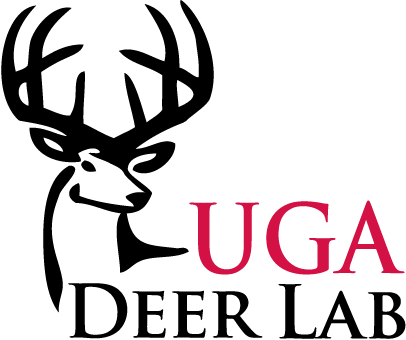The timing of the rut, or breeding season, for white-tailed deer varies locally, especially in southern climates like Georgia’s. During the rut, the desire to breed causes deer to become more active compared to the rest of the year. Bucks move more and become less secretive, making them easier to hunt and more susceptible to being hit by motor vehicles.
 Researchers at the University of Georgia and biologists with the Wildlife Resources Division found a strong correlation between peak deer-vehicle collision timeframes, deer conception dates and the hourly movement rates of deer tracked by GPS. Based on that information, deer-vehicle collision data provided by the Georgia Department of Transportation was used to map the timing of peak deer movement in Georgia.
Researchers at the University of Georgia and biologists with the Wildlife Resources Division found a strong correlation between peak deer-vehicle collision timeframes, deer conception dates and the hourly movement rates of deer tracked by GPS. Based on that information, deer-vehicle collision data provided by the Georgia Department of Transportation was used to map the timing of peak deer movement in Georgia.
Counties marked with an asterisk (*) had fewer than 100 deer-vehicle collisions for the sample period, too few to determine meaningful results. Accuracy of the dates shown for these counties will be low.
The map is based on “Using Deer-vehicle Collisions to Map White-tailed Deer Breeding Activity in Georgia,” a peer-reviewed article published in the Journal of the Southeastern Association of Fish and Wildlife Agencies. Co-authors are James H. Stickles, David B. Stone, Charles S. Evans, Karl V. Miller, Ph.D., Robert J. Warren, Ph.D., and David A. Osborn of UGA, and Charlie H. Killmaster of the Wildlife Resources Division.





